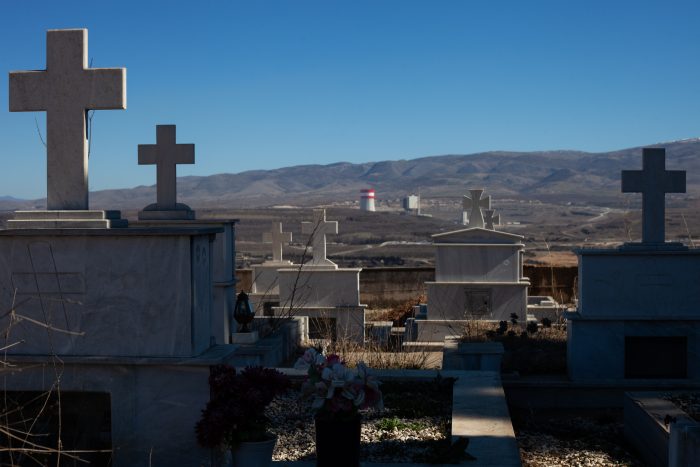23 March 2021
Europe’s coal phaseout: we’re halfway there
Author: Alastair Clewer, Communications Officer at Europe Beyond Coal
It has been five years since the UN Paris Climate Agreement, and in that short time, half of Europe’s coal plants have closed, or have announced pre-2030 closure plans. 2030 is now the key date for coal in Europe and the OECD, as it’s the latest possible moment these countries can close their coal plants and still meet the goals of the Paris Agreement. When EU coal power generation peaked in 2012, it was already clear that coal had no future, but few could have expected such a rapid decline. Reaching the midway point to the 2030 target at such speed is a massive achievement, and we can now say we are in the end game for coal in Europe.

A series of factors have contributed to coal’s rapid decline in Europe. Chief among them has been the dramatic fall in the cost of solar and wind, which saw power generated by renewable energy sources eclipse that produced by all fossil fuels for the first time in the EU in 2020. Decades of intensive civil society campaigning and palpable public anger over coal’s role in the climate crisis, and health impacts caused by air pollution have played a strong role. Increasingly robust EU policies have also played their part, including the Industrial Emissions Directive, the new 55 percent emission reduction target, and surging Emissions Trading Scheme allowance prices. Together, these factors have all helped convince an ever-growing number of financial institutions, governments, and utilities that coal’s day in the sun is over, welcoming in tough new policies that actively starve the industry of financial and political support.
Coal is in a similar state of decline in the United States, where the world’s first Beyond Coal campaign has helped bring about retirement commitments for 338 coal-fired power plants (179 GW) since January 2010, with 70.9 GW secured during Donald Trump’s presidency. With the Biden administration putting climate at the center of its policy agenda, net-zero carbon emissions announcements in Japan, South Korea and China, and the EU calling for a global end to coal, the question is not if, but when, coal will be eliminated, globally, for good.
Back in Europe, attention is now focused on the 162 coal plants that remain online or under construction. Seventy percent of them are concentrated in just three countries: Germany, Poland and Turkey. A further 20 percent are shared between the Czech Republic, Bulgaria, and Romania, while the remaining 10 percent are in the Western Balkans (in particular, Serbia, Bosnia and Herzegovina, and Kosovo). Of these countries, only Germany has a coal exit law, but it’s a deeply problematic one, overshooting Paris compatibility by eight years, and providing cover for laggards to drag out their coal exits.

Nowhere is this more evident than in Poland, where the government insists that its coal industry will continue until 2049, despite already haemorrhaging enormous losses. This hard-headed approach is epitomised by its plan to cajole the European Commission into signing off a decades-long carbon subsidy for its state-owned mining companies. It’s music to the ears of utilities like PGE, which has a cunning new plan to palm its loss-making coal assets onto another state-owned agency so it can pretend it’s clean and green.
The Czech government is in a more progressive mood. It’s currently discussing a national coal phase-out, with 2033 as one of the potential dates, although its coal commission recommended a slow, 2038 coal exit based on a 2030 carbon price projection that has already been exceeded. With Czechs already suffering water shortages as a consequence of Poland’s sprawling Turow lignite mine – prompting the Czech government to sue Poland – it’s hard to see why Czech leaders would not jump at the chance to turn the country’s back on coal.

Turkey holds the unwanted record for the largest number of coal plants planned or under construction in Europe, despite more than halving its coal project pipeline between 2016 and 2020. Promisingly, this growing trend of cancellations has continued into 2021, with three more coal projects shelved in March, showing that Turkey’s coal industry isn’t immune to the rates of decline seen elsewhere in Europe. Meanwhile, Serbia and Bosnia-Herzegovina are one focus area for China’s exportation of coal technologies, and together with Kosovo and North Macedonia, collectively emit six times as much sulphur dioxide as allowed under the Energy Community Treaty. Fortunately, North Macedonia is considering a 2027 coal phase-out.
What does this all mean for Europe’s lingering coal fleet? 162 plants remain, but social, political, and economic support for coal is evaporating faster now than ever before. The Polish government may be refusing to even contemplate an end to coal before the mid-century, but that’s not stopped coal regions, aware that a snap end to the industry would leave coal workers high and dry, taking matters into their own hands and planning for post-coal. The early retirement of some of Germany’s most modern coal plants telegraphs an earlier coal exit than currently planned for the continent’s biggest coal country, while punishingly high levels of air pollution in Turkey and the Balkans are met with increasing dismay by locals and will not be tolerated much longer.

As the health and cost benefits of renewables become common knowledge, and public concern over the climate crisis grows, the clamour for the end of coal is only set to increase. Governments, financial institutions and utilities should bank on the majority of Europe’s remaining plants being consigned to history over the coming five years. Those European and OECD countries not yet aboard the 2030 coal exit train are already missing out on many of the social, economic, and political benefits of committing to a rapid coal-to-renewables energy transition. Should they arrive at the UN climate meeting, COP26 in Glasgow, this November, still without concrete plans for a swift coal exit, they should expect to find themselves yet further isolated. But with coal at such a timely inflexion point, and support for the widespread rollout of renewables ramping up across Europe, there is a clear pathway ahead that leads to fairer, cleaner, healthier, and more resilient societies.
Get involved! Help speed the phase out of the rest of Europe’s coal power plants.
1. Click here to see some actions you can support online.
2. Use our online tool to #BlockFossilsOut.

